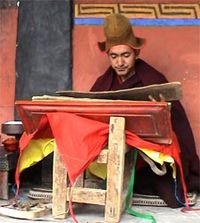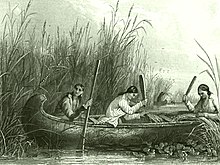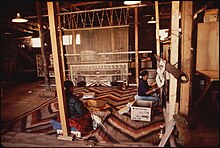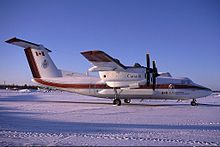Traditional knowledge, indigenous knowledge and local knowledge generally refer to knowledge systems embedded in the cultural traditions of regional, indigenous, or local communities. Traditional knowledge includes types of knowledge about traditional technologies of subsistence (e.g. tools and techniques for hunting or agriculture), midwifery, ethnobotany and ecological knowledge, traditional medicine, celestial navigation, ethnoastronomy, climate, and others. These kinds of knowledge, crucial for subsistence and survival, are generally based on accumulations of empirical observation and on interaction with the environment.
In many cases, traditional knowledge has been orally passed for generations from person to person. Some forms of traditional knowledge find expression in stories, legends, folklore, rituals, songs, and laws. Other forms of traditional knowledge are expressed through other means.
Characteristics
A report of the International Council for Science (ICSU) Study Group on Science and Traditional Knowledge characterises traditional knowledge as:
"a cumulative body of knowledge, know-how, practices and representations maintained and developed by peoples with extended histories of interaction with the natural environment. These sophisticated sets of understandings, interpretations and meanings are part and parcel of a cultural complex that encompasses language, naming and classification systems, resource use practices, ritual, spirituality and worldview."
Traditional knowledge typically distinguishes one community from another. In some communities, traditional knowledge takes on personal and spiritual meanings. Traditional knowledge can also reflect a community's interests. Some communities depend on their traditional knowledge for survival. Traditional knowledge regarding the environment such as taboos, proverbs and cosmological knowledge systems provide a lot of conservation ethos for biodiversity preservation. This is particularly true of traditional environmental knowledge, which refers to a "particular form of place-based knowledge of the diversity and interactions among plant and animal species, landforms, watercourses, and other qualities of the biophysical environment in a given place". An exemplar of a society with a wealth of traditional ecological knowledge (TEK), the South American Kayapo people, have developed an extensive classification system of ecological zones of the Amazonian tropical savannah (i.e., campo / cerrado) to better manage the land.
Some social scientists conceptualise knowledge within a
naturalistic framework and emphasize the gradation of recent knowledge
into knowledge acquired over many generations. These accounts use terms
like "adaptively acquired knowledge", "socially constructed knowledge,"
and other terms that emphasize the social aspects of knowledge.
Local knowledge and traditional knowledge may be thought of as
distinguished by the length of time they have existed - decades to
centuries versus millennia. A large number of scholarly studies in the
naturalistic tradition demonstrate that traditional knowledge is not a natural category, and may reflect power struggles and relationships for land, resources and social control rather than adherence to a claimed ancestry or heritage.
On the other hand, indigenous and local communities themselves may perceive traditional knowledge very differently. The knowledge of indigenous and local communities is often embedded in a cosmology, and any distinction between "intangible" knowledge and physical things can become blurred. Indigenous peoples often say that "our knowledge is holistic, and cannot be separated from our lands and resources". Traditional knowledge in such cosmologies is inextricably bound to ancestors, and ancestral lands. Knowledge may not be acquired by naturalistic trial and error, but through direct revelation through conversations with "the creator", spirits, or ancestors. Chamberlin (2003) writes of a Gitksan elder from British Columbia confronted by a government land-claim: "If this is your land," he asked, "where are your stories?"
Indigenous and local communities often do not have strong traditions of ownership over knowledge that resemble the modern forms of private ownership. Many have clear traditions of custodianship over knowledge, and customary law may guide who may use different kinds of knowledge at particular times and places, and specify obligations that accompany the use of knowledge. From an indigenous perspective, misappropriation and misuse of knowledge may be offensive to traditions, and may have spiritual and physical repercussions in indigenous cosmological systems. Consequently, indigenous and local communities argue that others' use of their traditional knowledge warrants respect and sensitivity. Critics of "traditional knowledge", however, see such demands for "respect" as an attempt to prevent unsubstantiated beliefs from being subjected to the same scrutiny as other knowledge-claims. This has particular significance for environmental management because the spiritual component of "traditional knowledge" can justify any activity, including the unsustainable harvesting of resources.
Property rights
International attention has turned to intellectual property laws to preserve, protect, and promote traditional knowledge. In 1992, the Convention on Biological Diversity
(CBD) recognized the value of traditional knowledge in protecting
species, ecosystems and landscapes, and incorporated language regulating
access to it and its use (discussed below). It was soon urged that
implementing these provisions would require revision of international
intellectual property agreements.
This became even more pressing with the adoption of the World Trade Organization Agreement on Trade-Related Aspects of Intellectual Property Rights (TRIPs), which established rules for creating and protecting intellectual property that could be interpreted to conflict with the agreements made under the CBD. In response, the states who had ratified the CBD requested the World Intellectual Property Organization (WIPO) to investigate the relationship between intellectual property rights, biodiversity and traditional knowledge. WIPO began this work with a fact-finding mission in 1999. Considering the issues involved with biodiversity and the broader issues in TRIPs (involving all forms of cultural expressions, not just those associated with biodiversity – including traditional designs, music, songs, stories, etc.), WIPO established the Intergovernmental Committee on Intellectual Property and Genetic Resources, Traditional Knowledge and Folklore (IGC-GRTKF).
The period of the early 1990s to the Millennium was also characterized by the rapid rise in global civil society. The high-level Brundtland Report (1987) recommended a change in development policy that allowed for direct community participation and respected local rights and aspirations. Indigenous peoples and others had successfully petitioned the United Nations to establish a Working Group on Indigenous Populations that made two early surveys on treaty rights and land rights. These led to a greater public and governmental recognition of indigenous land and resource rights, and the need to address the issue of collective human rights, as distinct from the individual rights of existing human rights law.
The collective human rights of indigenous and local communities has been increasingly recognized – such as in the International Labour Organization (ILO) Convention 169 (1989) and the Declaration on the Rights of Indigenous Peoples (2007). The Rio Declaration (1992), endorsed by the presidents and ministers of the majority of the countries of the world, recognized indigenous and local communities as distinct groups with special concerns that should be addressed by states.
Initial concern was over the territorial rights and traditional resource rights of these communities. Indigenous peoples soon showed concern for the misappropriation and misuse of their "intangible" knowledge and cultural heritage. Indigenous peoples and local communities have resisted, among other things: the use of traditional symbols and designs as mascots, derivative arts and crafts; the use or modification of traditional songs; the patenting of traditional uses of medicinal plants; and the copyrighting and distribution of traditional stories.
Indigenous peoples and local communities have sought to prevent the patenting of traditional knowledge and resources where they have not given express consent. They have sought for greater protection and control over traditional knowledge and resources. Certain communities have also sought to ensure that their traditional knowledge is used equitably - according to restrictions set by their traditions, or requiring benefit sharing for its use according to benefits which they define.
Three broad approaches to protect traditional knowledge have been developed. The first emphasizes protecting traditional knowledge as a form of cultural heritage. The second looks at protection of traditional knowledge as a collective human right. The third, taken by the WTO and WIPO, investigates the use of existing or novel sui generis measures to protect traditional knowledge.
Currently, only a few nations offer explicit sui generis protection for traditional knowledge. However, a number of countries are still undecided as to whether law should give traditional knowledge deference. Indigenous peoples have shown ambivalence about the intellectual property approach. Some have been willing to investigate how existing intellectual property mechanisms (primarily: patents, copyrights, trademarks and trade secrets) can protect traditional knowledge. Others believe that an intellectual property approach may work, but will require more radical and novel forms of intellectual property law ("sui generis rights"). Others believe that the intellectual property system uses concepts and terms that are incompatible with traditional cultural concepts, and favors the commercialization of their traditions, which they generally resist. Many have argued that the form of protection should refer to collective human rights to protect their distinct identities, religions and cultural heritage.
Public domain
Literary and artistic works based upon, derived from or inspired by traditional culture or folklore may incorporate new elements or expressions. Hence these works may be "new" works with a living and identifiable creator, or creators. Such contemporary works may include a new interpretation, arrangement, adaptation or collection of pre-existing cultural heritage that is in the public domain. Traditional culture or folklore may also be "repackaged" in digital formats, or restoration and colorization. Contemporary and tradition based expressions and works of traditional culture are generally protected under existing copyright law, a form of intellectual property law, as they are sufficiently original to be regarded as "new" upon publication. Once the intellectual property rights afforded to these new works of traditional knowledge expire, they fall into the public domain.
The public domain, as defined in the context of intellectual property rights, is not a concept recognised by some indigenous peoples. As much of traditional knowledge has never been protected under intellectual property rights, it is argued that they can not be said to have entered any public domain. On this point the Tulalip Tribes of Washington state has commented that "...open sharing does not automatically confer a right to use the knowledge (of indigenous people)... traditional cultural expressions are not in the public domain because indigenous peoples have failed to take the steps necessary to protect the knowledge in the Western intellectual property system, but from a failure of governments and citizens to recognise and respect the customary laws regulating their use". Equally however, the idea of restricting the use of publicly available information without clear notice and justification is regarded by many in developed nations as unethical as well as impractical.
Indigenous intellectual property
Indigenous intellectual property is an umbrella legal term used in national and international forums to identify indigenous peoples' special rights to claim (from within their own laws) all that their indigenous groups know now, have known, or will know. It is a concept that has developed out of a predominantly western legal tradition, and has most recently been promoted by the World Intellectual Property Organization, as part of a more general United Nations push to see the diverse wealth of this world's indigenous, intangible cultural heritage better valued and better protected against probable, ongoing misappropriation and misuse.
In the lead up to and during the United Nations International Year for the World's Indigenous Peoples (1993) then during the following United Nations Decade of the World's Indigenous Peoples (1995–2004) a number of conferences of both indigenous and non-indigenous specialists were held in different parts of the world, resulting in a number of declarations and statements identifying, explaining, refining, and defining 'indigenous intellectual property'.
Agreement on Trade-Related Aspects of Intellectual Property Rights (TRIPS)
Article 27. 3(b) of the Agreement on Trade-Related Aspects of Intellectual Property Rights (TRIPs) sets out certain conditions under which certain biological materials or intellectual innovations may be excluded from patenting. The Article also contains a requirement that Article 27 be reviewed. In the TRIPs-related Doha Declaration of 2001, Paragraph 19 expanded the review to a review of Article 27 and the rest of the TRIPs agreement to include the relationship between the TRIPS Agreement and the 1992 Convention on Biological Diversity (CBD) and the protection of traditional knowledge and folklore.
The Convention on Biological Diversity (CBD)
The Convention on Biological Diversity (CBD), signed at the United Nations Conference on Environment and Development (UNCED) in 1993, was the first international environmental convention to develop measures for the use and protection of traditional knowledge, related to the conservation and sustainable use of biodiversity. By 2006, 188 had ratified the Convention and agreed to be bound by its provisions, the largest number of nations to accede to any existing treaty (the United States is one of the few countries that has signed, but not ratified, the CBD). Significant provisions include:
Article 8. In-situ Conservation
Each Contracting Party shall, as far as possible and as appropriate:
(a)...
(j) Subject to its national legislation, respect, preserve and maintain knowledge, innovations and practices of indigenous and local communities embodying traditional lifestyles relevant for the conservation and sustainable use of biological diversity and promote their wider application with the approval and involvement of the holders of such knowledge, innovations and practices and encourage the equitable sharing of the benefits arising from the utilization of such knowledge, innovations and practices...
Article 10. Sustainable Use of Components of Biological Diversity
Each Contracting Party shall, as far as possible and as appropriate:
(a)...
(c) Protect and encourage customary use of biological resources in accordance with traditional cultural practices that are compatible with conservation or sustainable use requirements
The interpretation of these provisions has been elaborated through decisions by the parties (ratifiers of the Convention) (see the Convention on Biological Diversity Handbook, available free in digital format from the Secretariat). Nevertheless, the provisions regarding Access and Benefit Sharing contained in the Convention on Biological Diversity never achieved consensus and soon the authority over these questions fell back to WIPO.[22]
At the Convention on Biological Diversity meeting, in Buenos Aires, in 1996, emphasis was put on local knowledge. Key players, such as local communities and indigenous peoples, should be recognized by States, and have their sovereignty recognised over the biodiversity of their territories, so that they can continue protecting it.[23]
The parties to the Convention set a 2010 target to negotiate an international legally binding regime on access and benefit sharing (ABS) at the Eighth meeting (COP8), 20–31 March 2006 in Curitiba, Brazil. This target was met in October 2010 in Nagoya, Japan, by conclusion of the Nagoya Protocol to the CBD. The agreement is now open for ratification, and will come into force when 50 signatories have ratified it. It entered into force on 12 October 2014. As of October 2017, 100 nations and the EU ratified the Nagoya Protocol.[24] The Protocol treats of inter-governmental obligations related to genetic resources, and includes measures related to the rights of indigenous and local communities to control access to and derive benefits from the use of genetic resources and associated traditional knowledge.
Government of India efforts
In 2001, the Government of India set up the Traditional Knowledge Digital Library (TKDL) as repository of 1200 formulations of various systems of Indian medicine, such as Ayurveda, Unani and Siddha and 1500 Yoga postures (asanas), translated into five languages — English, German, French, Spanish and Japanese. India has also signed agreements with the European Patent Office (EPO), United Kingdom Intellectual Property Office (UKIPO) and the United States Patent and Trademark Office (USPTO) to prevent the grant of invalid patents by giving patent examiners at International Patent Offices access to the TKDL database for patent search and examination.
IPR Policy of Kerala Govt.(India) - Intellectual Property Rights (IPRs) Policy for Kerala released in 2008, proposes adoption of the concepts ‘knowledge commons’ and ‘commons licence’ for the protection of traditional knowledge. The chief architects of the Policy are Prof. Prabhat Patnaik and Mr. R.S. Praveen Raj. The policy seeks to put all traditional knowledge into the realm of "knowledge commons", distinguishing this from the public domain. While codification of TK in digital libraries and sharing the same with patent offices prevents direct misappropriation, it is feared that it may provide an opportunity for private appropriation by making cosmetic improvements to such traditional knowledge that is not readily accessible otherwise. TKDL cannot at the same time be kept confidential and treated as prior art - says R.S. Praveen Raj.
According to R S Praveen Raj any attempt to codify community-held TK in the form of Traditional Knowledge Digital Libraries (TKDL) using "Prior Informed Consent" and "Access and Benefit Sharing" concepts would be a gross injustice to those communities if the knowledge was shared with patent offices or even with researchers, as it would affect the livelihoods of Traditional Knowledge practitioners. He also cautions against classifying Traditional Knowledge under Intellectual Property Rights (IPR) and creation of statutory registrable rights on TK. Instead, he proposes the creation of a Traditional Knowledge Docketing System (TKDS) to indicate the location at which the knowledge is available, the community that possesses the traditional knowledge, a short description of the nature of TK and community protocol, if any. He argues that the indigenous communities should be educated and empowered to protect their TK through existing legal mechanisms or take patents on the innovations made by them on the TK (if they feel so) and to negotiate with the potential customers by forming societies or trusts of their own. There is no bar for patenting inventions, though it may be based on TK. Section 3(p) of Indian Patents Act, 1970 only prevents patenting of "traditional knowledge or which is an aggregation or duplication of known properties of traditionally known component or components" and not patenting of any inventions based on TK.
In the year 2016, Dr. Shashi Tharoor, Member of Parliament from Thiruvananthapuram introduced a Private Bill (The Protection of Traditional Knowledge Bill, 2016). The Bill was introduced for the protection, preservation and promotion of traditional knowledge system in India. The Bill is yet to be discussed in the Parliament. Neither, the Bill was discussed much in the media. According to Mr. Vishnu S Warrier, Dr. Shashi Tharoor has failed to address the real concern of traditional knowledge through his Private Bill.It is important in our life.
Traditional cultural expressions
The phrase "traditional cultural expressions" is used by the World Intellectual Property Organization to refer to "any form of artistic and literary expression in which traditional culture and knowledge are embodied. They are transmitted from one generation to the next, and include handmade textiles, paintings, stories, legends, ceremonies, music, songs, rhythms and dance."









